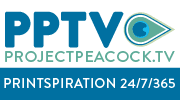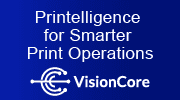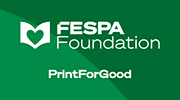
By Chloe Mahendra-Fuji, Print Diva
Hi! I’m Chloe! If you have been following me you know that I work with customers to help them be the best they can be. Last month I told you my tale of woe as I tried to get a job done on an inkjet press and managed to mangle it. With great advice from the printer and some additional learning I was able to get most of the way to where I wanted to be. It wasn’t the technology, it was my biases as a Print Diva used to offset and toner.
Out of that experience I learned that there is a magic ingredient. Paper.
There are so many kinds of paper. There is even paper that isn’t really paper – that is it isn’t made from wood pulp or cotton. A whole range of synthetic media including water-resistant papers like Teslin and even PET-based substrates are in use at this very minute by printers using a variety of digital devices.
Just finding cool papers that will make the job look fabulous isn’t enough. You must learn the paper to make the job look its best. The first lesson is that not all papers belong on all technologies. If the paper is the most important facet of the job you need to print, talk to the paper manufacturer about the appropriate print technologies. If you know the device you need to use, talk to the print provider about the types of paper they recommend to get the look and feel you need for the job.
Once you settle on the paper and the print technology take a step back. Just because the paper and the technology are appropriate doesn’t mean your file is set up to take advantage of the best features. Photographic images and graphics prepared by an agency may have assumed an offset print environment. They may have been saved with ICC profiles that call for over inking to get a nice, vibrant look. When you jump the chasm to digital the rules change for every type of digital device. Some don’t mind the over inking in the ICC profile for individual images, while others do. Some want under inking in the profile. Some respect the profiles and others do not.
It turns out that the profile information set in the images and for the overall file impact how the various digital devices interpret the job file, and that can lead to amazing print or muddy print or washed out print depending on how the paper works with the print technology and what information was passed from the print file to the digital front end to the print device.
And just because it is a PDF doesn’t mean it will be safe. I have been working on a job to take some fine paintings to a digital format for limited editions and the first attempt was not as we hoped. First the scan wasn’t calibrated so the colors shifted a bit. We might have been OK but the paper the artist selected was just not happy being printed with the available digital technology. We’ve gone back to the drawing board on the paper selection, the scanning method, and the type of digital printing!
Watch this space for more from the life of a Print Diva.
 Chloe Mahendra-Fuji practices the fine arts of design critique, content creation and editing, and communication consulting. She has decades of experience working in online content delivery, print delivery, and content development.
Chloe Mahendra-Fuji practices the fine arts of design critique, content creation and editing, and communication consulting. She has decades of experience working in online content delivery, print delivery, and content development.
Connect with Chloe on Twitter: @ChloePrintDiva / [email protected]













